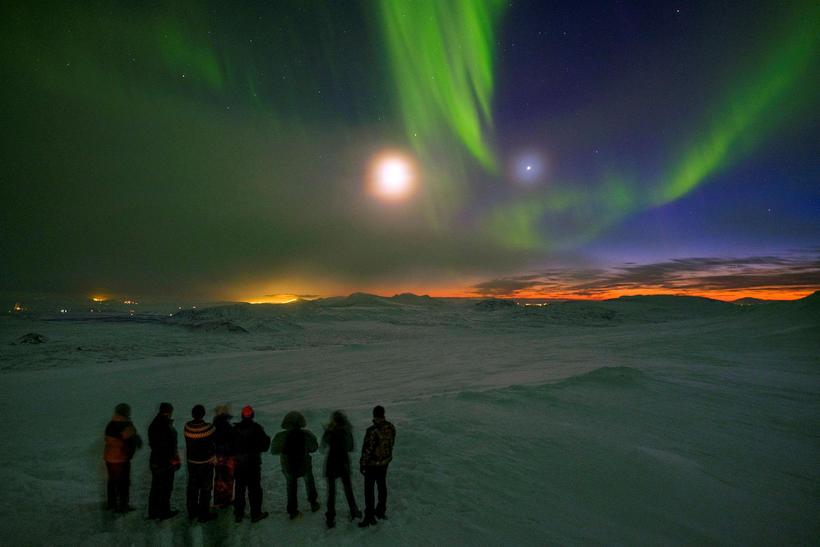Iceland's Future Forests
"At the time of human settlement almost 1150 years ago, birch forest and woodland covered 25-40% of Iceland's land area. The relatively tall (to 15 m) birch forests of sheltered valleys graded to birch and willow scrub toward the coast, on exposed sites and in wetland areas and to willow tundra at high elevations."
"As in agrarian societies everywhere, the settlers began by cutting down the forests to create fields and grazing land. Sheep were important as a source of wool from the outset, but by about 1300 they had become a staple source of food for Icelanders as well"


"An important contributor to Iceland's mitigation policy is planting trees."Iceland has a spectacular and most unfortunate lack of trees. It is a northern, volcanic island; a group of islands to be more precise, the largest, main island on which the capital Reykjavik stands. It suffers from severe soil erosion. Unsurprising, given the lack of forests in the country since any kind of vegetation struggles to set down roots and a lasting presence. Raising livestock is impracticable under the circumstances; where and what would they graze? Similarly farming presents its own dilemma with the loose soil swept away by wind of which Iceland has an abundance.
"It's a big discussion here."
"[Roughly 40 percent of the country is desert] but there's plenty of rainfall -- we call it 'wet desert'."
Gudmundur Halidorsson, Soil Conservation Service of Iceland
"The aim now is that in the next fifty years we might go up to five percent [coverage in forest growth in barren Iceland's environment]."
But at the speed we're at now, it would take 150 years to do that."
Saemundur Thorvaldsson, Iceland government forester
The population of Iceland is about 350,000 people living in a small geography, estimated at 39,000 square miles. A volcanic eruption occurs on average every four years. Quaintly in this most peculiar of environments, which is said to be the last on Earth to have been inhabited by settlers, there is a popular and firm belief in the presence of elves. The native language spoken is that of ancient Norse. It is outstanding as a whale-watching venue, earning the country tourist dollars for that very purpose. Unsurprisingly for an isolated population, more films are viewed in Iceland than anywhere else in the world.
The country uses geothermal energy and hydro power to solve its energy needs, yet still faces high per capita emissions of greenhouse gases, as a result of transportation and heavy industries such as aluminum smelting. That there is an absence of trees to perform the vital function of absorbing atmospheric carbon dioxide within their trunks, roots and tissues spells a huge dilemma for a country anxious to meet climate change goals through offsetting its industrial emissions..
There are no trees -- at least there is a huge dearth of trees -- because a thousand years ago Viking settlers axed the forests that had once been hosted on 24 percent of the countryside. Not that Iceland hasn't been trying to regenerate forests. "It's definitely a struggle", explained Jon Asgeir Jonsson who has been planting trees in the barren landscapes of his country, with the understanding that the return of forests would go far to improve and stabilize the harsh soils reflecting desertification resulting from deforestation.
 |
| mbl.is/Eggert Jóhannesson |
Volcanic ash and rock spewed by ongoing eruptions contributes to severe soil erosion. Loose soil and strong winds make for sandstorms further damaging the land. Sandstorms fierce enough to blast the paint off cars. Thick layers of volcanic material leave ash rich in nutrients, but representing fragile soil unable to hold water, which shifts about with the blowing wind. Mr. Thorvaldsson considers the tree species to plant in Iceland is birch, reflecting the original species, 30 percent dominant when the land was settled.
Birch's ability to tolerate poor soil provides shelter for other species as it grows. Sitka spruce, lodgepole pine, black cottonwood -- all originated in Alaska, now growing as well in Iceland as saplings in greenhouses. Trees imported from elsewhere are prohibited by law. These trees grow quicker than birch but even they grow slowly. In comparison southeast Alaska sees its trees reaching three times the height of spruces planted in the 1940s, now reaching 15 meters in height.
 |
| Viewing the Northern Lights -- mbl.is/Golli |
Labels: Climate Change, Environment, Forests, Iceland

0 Comments:
Post a Comment
<< Home